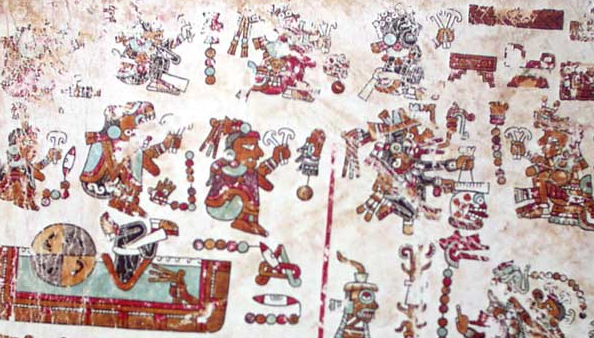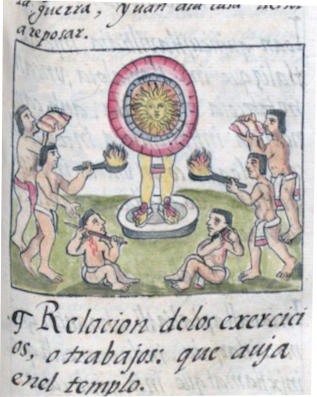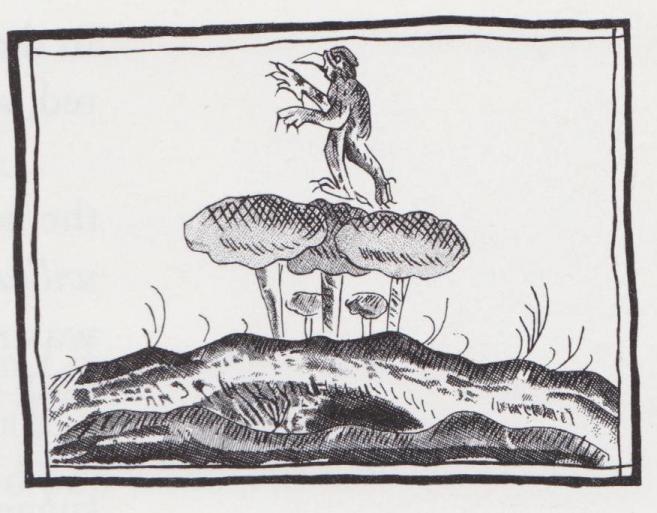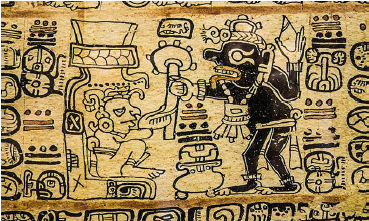Ancient Psychedelia: Alien Gods & Mushroom Goddesses
Online Book - Chapter 19, Page 370
Back to Online Book Mainpage / Next Page (Chapter 19, Page 371)
 (75h) Codex Vindobonensis Mexicanus I c. 1300-1400 AD Several of our earliest Western representations of mushrooms come to us from the Franciscan friar, Bernardino de Sahagun (1499-1590). He was a missionary priest involved in conversions in New Spain, journeying there in 1529 to learn Nahuatl and spent the next fifty years in the study of Aztec beliefs, culture and history. Several of his writings survive in the Florentine Codex in the Biblioteca Laurenziana in 1579. These drawings were commissioned by the priesthood, so this must be kept in mind. One of the images, from the Florentine Codex depicts an upright clawed beast standing atop a cluster of mushrooms (75i). Also, from the Florentine Codex in the History of New Spain, by Sahagun, we see what appears to be a sacrifice scene, with people roasting a deity on a fire pit and the deity resembles a mushroom slightly, He has a solar face, but a mushroom cap veil all around (75c).  (75c) From the History of New Spain. Florentine Codex c. 1579 |
 (75i) From Sahagun's History of New Spain depicting a devil dancing on a toadstool. 1579 Another, from the Magliabechiano Codex depicts a monstrous deity approaching an unwitting mushroom consumer from behind, while a patch of mushrooms sit in front of the person, suggesting the basis for his consumption. The image is suggestive once again, of demonic possession. According to Professor Jimenez Moreno, the deity is probably Mictantecuhtli, the Lord of the Underworld, depicted on other pages of the same Codex. The Codex is painted on European paper with an estimated date of no later than 1528. (48) The Madrid Codex c. 900–1521 AD, contains a scene of a worshipper accepting a mushroom from a dark colored deity (75j).  (75j) Scene from Madrid Codex c. 900–1521 AD (48) Wondrous Mushroom, p. 112-14 |
Go Back to Page 369